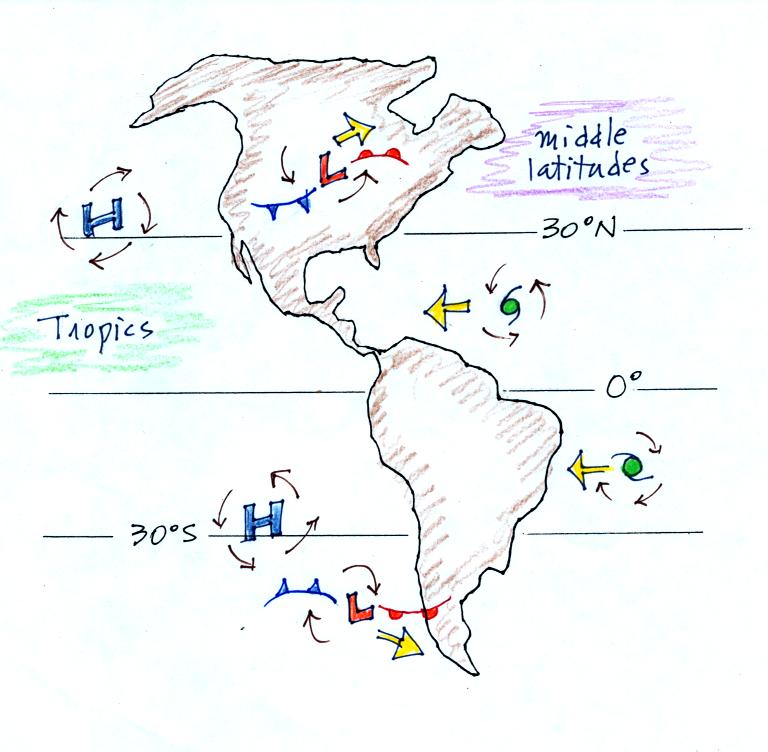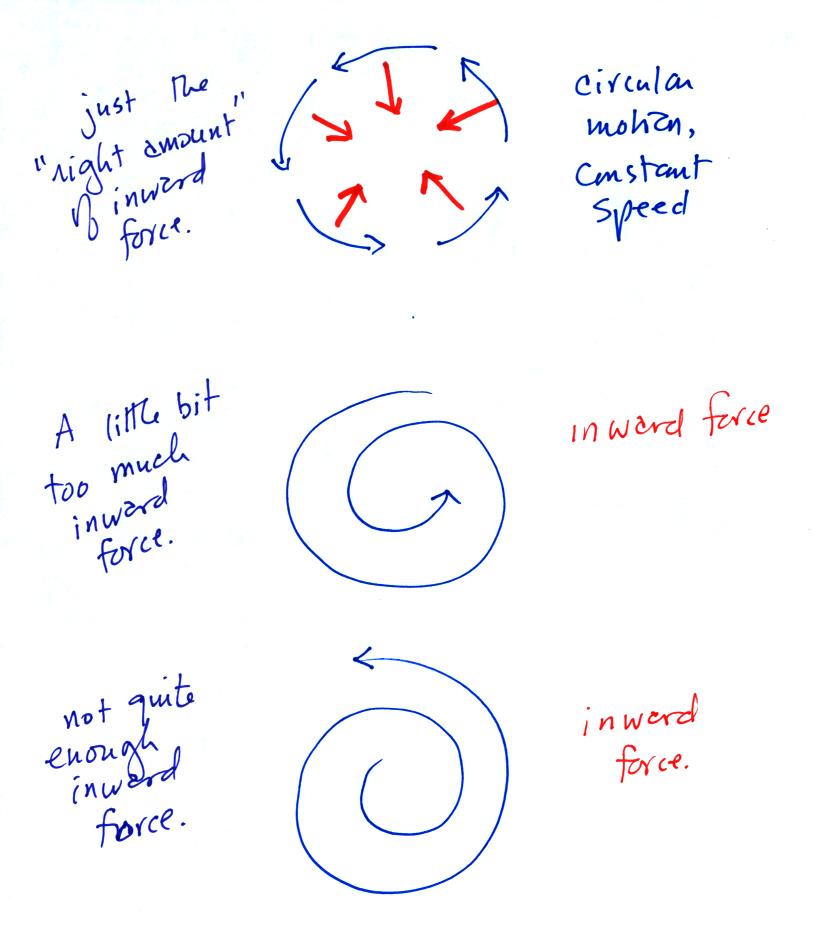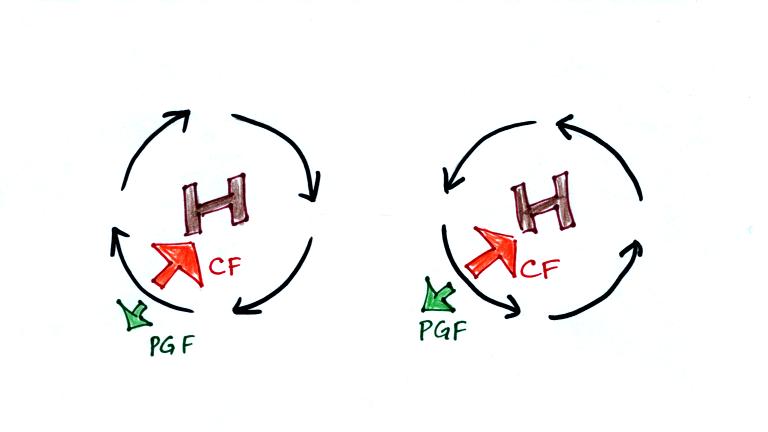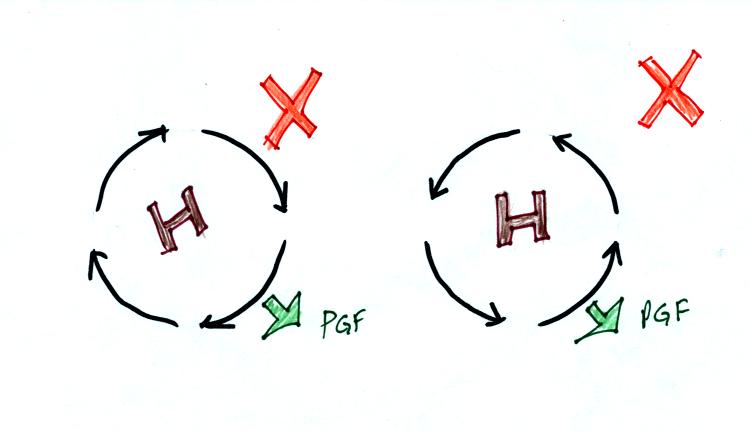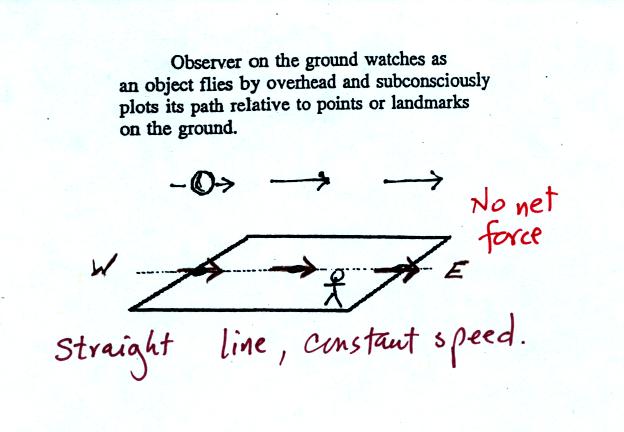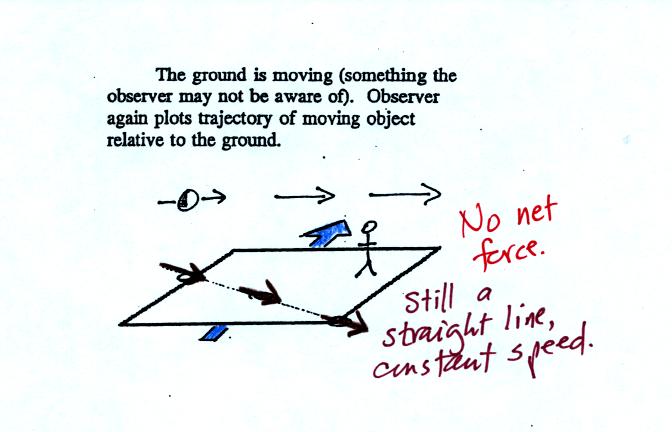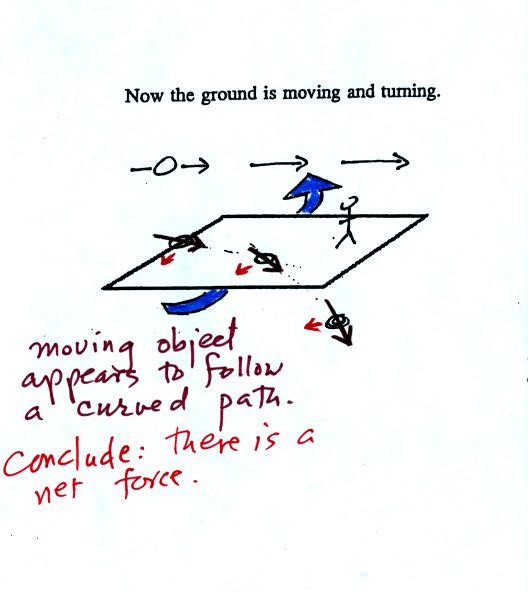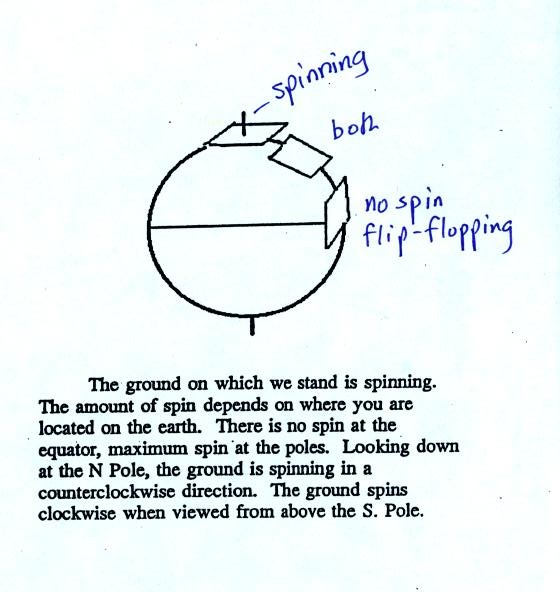Tuesday Nov. 9, 2010
click here to download today's notes in a more
printer friendly format
A couple of songs from Dire Straits before class today ("Sultans of Swing"
and
"Walk of Life").
I
hope I haven't already played this earlier this semester.
Quiz #3 has been graded and was returned in class. Grades are
often lower than normal on this quiz (midsemester burn out or something
like that) but this class went against that trend this time.
The Experiment #3 reports (and a few book reports) have been
graded. You have two weeks to revise your report is you want
to. Revised reports are due on Tue., Nov. 23 (the Tuesday before
Thanksgiving). Please return your original report with your
revised report.
The 1S1P Assignment #2a reports were collected today. The Bonus
Assignment reports ("Write Your Own Story") are due by Friday this
week. Since we don't have class on Thursday you can either drop
them off in my office or email them to me. The Assignment
#2b reports are due by Tuesday next week.
In the
next couple of classes we will be looking at how
and why
surface and upper level
winds blow the way they do.
Some real world examples of where this occurs are shown in the figure
below.
The two largest types of storm systems, middle latitude
storms and hurricanes, develop around surface centers of low
pressure. Winds
spin counterclockwise around low in the northern hemisphere then
reverse direction and spin clockwise in the southern hemisphere. Winds
spin clockwise around
"anticyclones" (high pressure) in the northern hemisphere and
counterclockwise in the southern hemisphere.
Some things change direction in the southern hemisphere, others remain
the same.
Storm systems in the tropics (0 to
30 degrees latitude) generally move
from east to west. This is true in both hemispheres. At
middle latitudes (30 to 60 degrees), storms move in the other
direction,
from west to
east. To understand why this is true we need to learn something
about the earth's global scale pressure and wind patterns. This
is a topic we will be getting into next week.
I've borrowed the more carefully
drawn figures below from the
Spring 2009
online notes. Steps 1-8 below were on a 4 page handout
distributed in
class. An In-class
Optional Assignment was distributed in class today. If you
weren't in class but are reading through these notes you can download
the assignment & turn it in at the beginning of class next Tuesday
and receive at least partial credit.

Upper level winds spinning around
high and low pressure in the
northern and southern hemispheres are shown in the first set of four
pictures. The first thing to notice is that upper level winds
blow parallel to the contours. We will see that 2 forces, the
pressure gradient force (PGF) and the Coriolis force (CF), cause the
winds to blow this way. Eventually you will be able to
draw the directions of the forces for each of the four upper level
winds examples. Here is an
example
of what you will be able to do.
The four drawings at the bottom of the page show surface winds
blowing
around high and low pressure in the southern hemisphere. These
winds blow across the contour lines slightly, always toward low
pressure. The frictional force is what causes this to
occur. He is
an example of what you will be able to say about surface winds
blowing around low pressure in the southern hemisphere.

The main point to take from Step #2
is that a net inward force is
needed anytime an object is moving in a circular path. It doesn't
matter what direction the object is moving. The net force is
inward anytime something moves in a circular path.
Quite a few people would say there is an outward force being
exerted in
the bottom picture below, but the force is inward in all 3 cases.
It's just not the same amount of
inward force. The amount of
force is just right in the top figure, a little "too strong" in the
middle figure, and "not quite strong enough" in the bottom figure.
Now we'll
start to look at the forces that cause the wind to blow.
Here's the rule for the direction
of the pressure gradient force: the PGF is perpendicular to the
contours and always
points toward low pressure.
Each of the forces that we will discuss has a unique property. In
the case of the PGF, it can cause stationary air to begin to move (the
initial motion will always be
toward low
pressure).
The Coriolis force is caused by the
rotation of the earth and points
in a direction that is perpendicular to the wind (direction
rule). It can only
change the wind's direction, it can't cause the wind to speed up or
slow down (it's unique property). The direction of the CF depends
on whether you're in
the northern or southern hemisphere. There is a short section at
the end of today's notes that tries to explain the cause or origin of
the Coriolis force.

Now we start to put everything
together. The PGF at Point 1
starts stationary air moving toward the center of low pressure (just
like a rock would start to roll downhill).
Once the air starts to move, the CF causes it to turn to the right
(because this is a northern hemisphere chart). The wind
eventually ends up blowing parallel to the contour lines and spinning
in a
counterclockwise direction. Note that the inward PGF is stronger
than the outward CF. This results in a net inward force,
something that is needed anytime wind blows in a circular path.
Start with some stationary air at
Point 1 in this figure and see if you can figure out how the winds will
develop and end up blowing. When you
think you have the answer click here.
With high pressure the air starts
moving outward. In this
northern hemisphere example
the wind then takes a right turn and ends up blowing in a clockwise
direction around the high. Note there is a net inward force here
just as there was with the two previous examples involving low pressure.
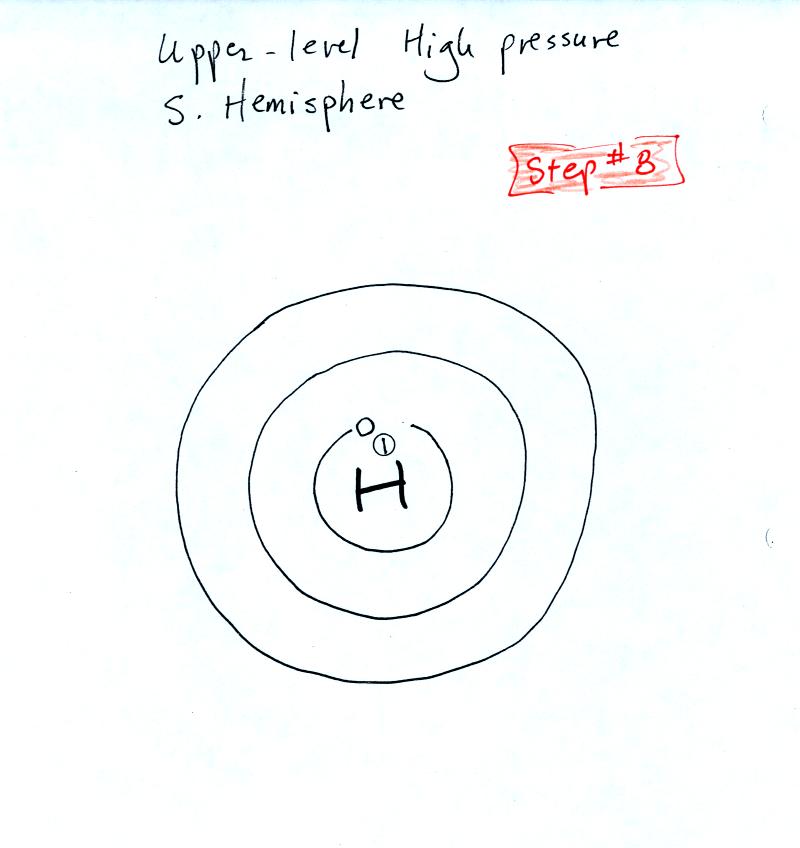
Start again with some stationary air at Point 1 and try to figure out
the rest on your own.
When you think you have the
answer, click here.
The last two steps deal with surface winds. We'll start with
an upper level wind blowing parallel to straight contours, add the
frictional force, and see why/how that causes the surface wind to turn
and blow across the contours toward low pressure.

We add friction in the second picture. It points in a direction
opposite the wind (direction rule) and can only slow the wind down
(it's unique property). The strength
of the frictional force depends on wind speed (no frictional force if
the wind is calm) and the surface the wind is blowing over (less
friction over the ocean than when the wind is blowing over the land).
Slowing the wind weakens the CF and it can no longer balance the
PGF (3rd figure). The stronger PGF causes the wind to turn and
start to blow across the
contours toward Low. This is shown in the 4th figure.
Eventually the CF and Frictional force, working together, can balance
out the PGF.
As long as we're talking about friction, here's the answer to one of
the questions on the In-class Optional Assignment.

What we've learned from the straight contour example above, namely that
the winds will blow across the contours toward low pressure, can be
applied to a curved contour pattern.
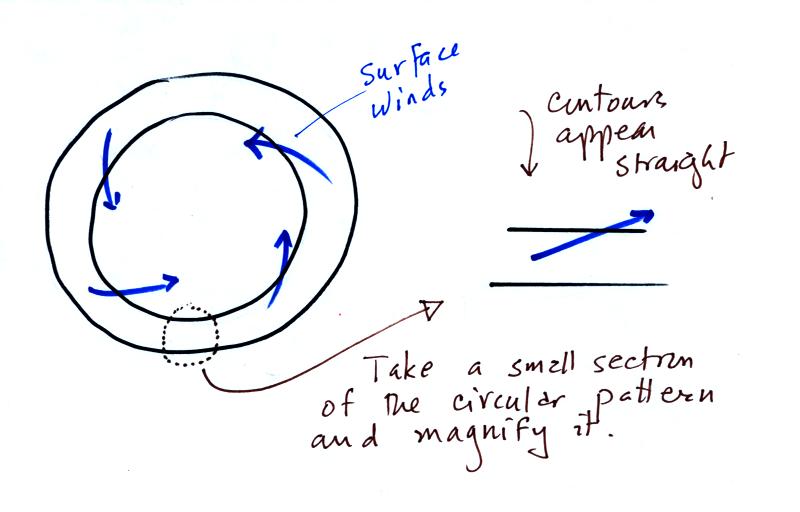
If you take a small little piece of
a curved pattern and magnify it, it will look straight. This is
shown above.

It is easy to figure out which of the figures are centers of
low pressure. The winds are spiraling inward in the top and
bottom
examples (1 and 3).
These must be surface centers of low pressure. The winds are
spiraling outward from the centers of high pressure (2 and 4).
Now you probably don't want to figure out which of these are northern
and which are southern hemisphere pictures. It is probably best
to remember one of the pictures. Remember in 1, for example, that
surface winds spin
counterclockwise and spiral inward around centers of
low pressure in the northern hemisphere (something we learned
early in
the semester). Then remember that winds spin in the other
direction and blow outward around high pressure in the northern
hemisphere (2). The spinning directions of the winds reverse when
you move from the northern to the southern hemisphere. Thus you
find clockwise spinning winds and inward motion around low pressure (3)
and counterclockwise and outward spiraling winds around high pressure
in the southern hemisphere.
Converging winds cause air to
rise. Rising air expands and cools and can cause clouds to
form. Clouds and stormy weather are associated with surface low
pressure in both hemispheres. Diverging winds
created sinking wind motions and result in clear skies.
It seemed appropriate at this point to look at a
common misconception involving the Coriolis force. You
might
already
have
heard
that
water
spins
in
a
different direction
when it drains from a sink or a toilet bowl in the southern hemisphere
than it does in the northern hemisphere. You might also have
heard that this is due to the Coriolis force or the Coriolis
effect.
The Coriolis force does
cause winds to spin in opposite directions around high and low pressure
centers in the northern and southern hemisphere. The
PGF starts the air moving (in toward low, out and
away from high pressure) then the Coriolis force bends the wind to the
right (N. hemisphere) or to the left (S. hemisphere).
Here's what you end up with in the case of low pressure (you'll find
these figures on p. 130 in the photocopied ClassNotes):
Air starts to move inward toward low pressure. Then
the
Coriolis force causes it to turn to the right or left depending on
which hemisphere you're in. You should be able to figure out
which of
the pictures above is the northern hemisphere and which is the southern
hemisphere picture.
The same kind of idea applies to
high
pressure except that the air starts moving outward. The Coriolis
force then turns it to the right or left. The CF is very
important in this case because it supplies the net inward force needed
to keep wind blowing in a circle.
There are situations where the PGF is much stronger than
the
CF and the CF can be ignored.
A
tornado
is
an
example.
Winds
can
blow
around Low pressure because the PGF points inward.
The wind can spin in either direction in either
hemisphere.
Without the CF winds can't spin around High pressure
because
there is nothing to provide the needed inward force.
What about water draining from
sinks, buckets, toilets etc.
There's just an inward pointing PGF that is stronger than the CF
(you'll just have to trust me on that). Water can spin in either
direction in either hemisphere.
Now we watched a short video segment that
seemed to show
otherwise. In the video a young man living at the Equator in
Kenya was making a living demonstrating the Coriolis effect to
tourists. He showed water draining from a bucket and spinning in
opposite directions depending on whether he was north or south of the
equator. The water seemed to drain without spinning at all right
at the equator.
Don't believe everything you see on video. The
gentleman in the video was just very good at getting the draining water
to spin one direction or another as he moved on opposite sides of the
equator. Probably the most difficult part would be to get the
water draining without spinning, which is what he was able to do when
standing right on the equator.
But this something we should probably checkout for ourselves, so here
is one of my favorite
optional assignments of the semester.
Now here is a self guided explanation of the cause or origin of
the Coriolis force. We didn't have time to cover this in class on
Tuesday.
Next we had a short look at the cause of the Coriolis force.
Most of
what follows can
be found on p. 122c in the photocopied ClassNotes.
Imagine something flies over Tucson. It
travels
straight from west to east at constant speed. The next figure
shows the path that
the object followed as it passed over the city.
It would appear (relative to the ground) to be moving in a
straight line at constant
speed. You would conclude there was zero net force acting on the
moving object (Newton's first law of motion).
In this second picture the object flies by overhead
just as it
did in the previous picture. In this picture, however, the ground
is moving (don't worry about what might be causing the ground to move).
This is the path that you would see relative to the
ground
in this
case. Even though the object flew from west to east it
appears to have been traveling from the NW toward the SE because the
ground was moving. Because
the object's perceived motion (relative to the ground) is still in a
straight line at constant speed, you would
conclude the net force acting on the object was zero.
In this last figure the object flies just as it did in the 2
previous pictures. In this case however the ground is rotating.
Now the path of the object plotted on the ground appears to be
curved. Maybe you're not aware of the fact that the ground is
spinning or you choose to ignore it. In that case and based on
the path relative to the ground you'd conclude that there was a net
force
perpendicular and to the right of the moving object. This net
force would explain the curved path that the object appears to be
following.
At most locations on the earth the ground IS rotating (we're just
not
aware of it). This is
most easily seen at the poles.
Imagine a piece of paper glued to the top of a globe.
As the
globe spins the piece of paper will rotate. A piece of paper
glued to the globe at the equator won't spin, it will flip over.
At points in between the paper would spin and flip, the motion gets
complicated.
The easiest thing for us to do is to ignore or forget about the
fact that the
ground on
which we are standing is rotating. We do still need to account
for the curved paths that moving objects will take when they
move relative to the earth's surface. That is what the Coriolis
force does.
